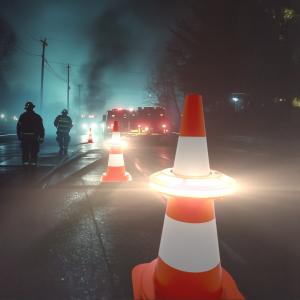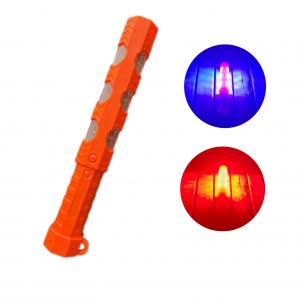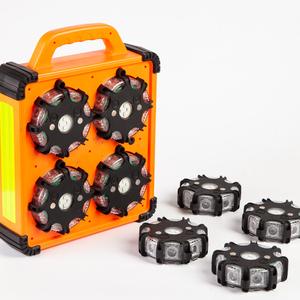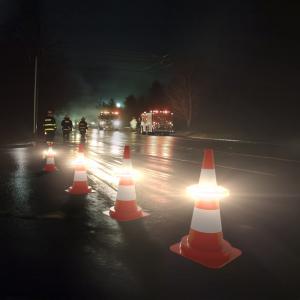Warning Light Compliance Across Traffic, Firefighting & Construction Industries
Introduction
From bustling highways and dynamic construction sites to intense firefighting operations, warning lights are a fundamental element of safety management worldwide. Meeting strict compliance standards is essential not only to achieve optimal visibility but also to communicate crucial signals to pedestrians, motorists, and on-site professionals. In this article, we explore how warning lights adhere to industry-specific regulations across traffic management, emergency response, and construction, and why high-quality LED warning lights have become indispensable.
1. Traffic Control and Visibility
Reliable warning lights are a critical component of traffic management systems. Regulatory bodies mandate that these devices meet defined luminous requirements, ensuring that signals remain visible under different conditions—day or night. Key compliance elements include:
-
Color-Coding Standards: Specific hues (such as amber or red) are often required to convey particular warnings.
-
Intensity and Flashing Frequency: Lights must adhere to prescribed brightness levels and flash intervals to capture attention effectively.
-
Weather Resistance: All equipment must perform reliably in adverse conditions such as rain, snow, or heavy fog.
By enforcing these standards, traffic safety agencies ensure that every component—from portable LED units to permanently mounted fixtures—contributes to accident prevention and overall road safety.
2. Firefighting and Emergency Response
In emergency scenarios, especially firefighting, rapid and clear visibility is crucial. Specialized warning lights are designed to be effective in environments with low visibility, such as smoke-filled situations, allowing first responders to navigate safely and alert surrounding personnel. Compliance for these lights typically requires:
-
High Visibility in Challenging Environments: Emphasis on red or amber lights that can cut through smoke.
-
Robust Construction: Devices must be waterproof, shock-resistant, and able to operate under high-temperature conditions.
-
Consistent Operation: Maintaining steady brightness is key, even when exposed to extreme conditions.
These standards ensure that in critical moments, every warning light delivers reliable performance, aiding in swift emergency responses.
3. Construction Sites and Occupational Safety
Construction sites are inherently dynamic environments where safety is paramount. Warning lights serve not only to alert workers of potential hazards but also to guide the movement of heavy vehicles and machinery safely. Regulations in this sector often include:
-
Mandatory Brightness and Energy Standards: Lights must be sufficiently bright to be seen against the backdrop of intense activity and variable lighting conditions.
-
Durability and Flexibility: Equipment must be robust enough to handle physical shocks and easily repositioned to adapt to changing site layouts.
-
Installation on Diverse Equipment: Whether mounted on cones, barriers, or construction machinery, warning lights help create a secure work environment.
Such comprehensive standards help reduce on-site accidents and contribute to maintaining occupational safety.
4. Technology and Efficiency
Modern warning lights have evolved significantly with the integration of LED technology. These units offer superior performance through:
-
Enhanced Visibility: LED lights provide consistent, high-intensity illumination even during low-light conditions.
-
Energy Efficiency and Longevity: Lower power consumption combined with a longer operational life makes LED warning lights economically attractive.
-
Smart Control Systems: Many modern units incorporate features like remote activation and adaptive flashing patterns to suit ambient lighting conditions, ensuring compliance while keeping operational costs manageable.
This technological edge not only improves overall safety but also simplifies maintenance and management.
5. Maintenance and Training
Ensuring that warning lights continue to operate at peak performance requires more than just adherence to product standards. Comprehensive strategies for safety compliance include:
-
Regular Maintenance Checks: Routine inspections help identify and resolve issues before they lead to failures.
-
Staff Training: Operators and maintenance staff must be well-versed in local regulations and proper handling practices for warning lights.
-
Documentation and Periodic Inspections: Keeping detailed records is essential for proving compliance and for avoiding non-compliance penalties during audits.
By fostering a culture of safety through continuous training and systematic maintenance, industries can ensure that warning light systems remain effective over time.
Conclusion
Across highways, construction sites, and emergency scenes, warning lights are a cornerstone of modern safety strategy. Strict compliance with performance, durability, and visibility standards helps safeguard lives and infrastructure in diverse industrial environments. As technology advances, LED warning lights and smart control systems further enhance these safety measures, ensuring that stakeholders—from traffic safety agencies to on-site construction managers—are equipped to minimize risks and improve operational efficiency.
For high-quality LED warning lights and a broad range of safety solutions, Ningbo Brilliant Dragon Electronic Technology Co., Ltd offers professional manufacturing tailored to diverse industrial needs. Explore their product range and find out how these innovative solutions can help you meet your compliance requirements.





